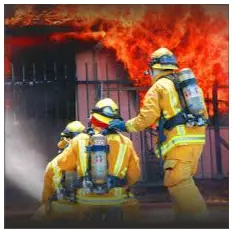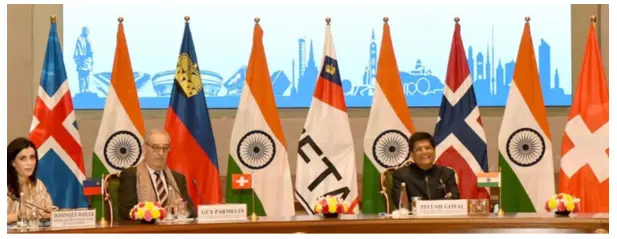Friday, 31st May 2024
Menstrual Hygiene in Indian Prisons
In News: India has seen notable advancements in menstrual hygiene management, with approximately 80% of young women aged 15-24 now utilizing safe menstrual products, as per the National Family Health Survey (NFHS 2019-2020). Despite progress in urban areas and specific demographics, women in Indian prisons continue to face neglect in this regard.
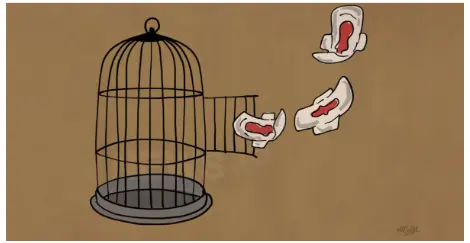
Improving Menstrual Hygiene in Indian Prisons: Challenges and Solutions
Understanding Menstrual Hygiene
- Menstrual Health and Hygiene (MHH) is crucial for the well-being and empowerment of women and adolescent girls.
- Over 300 million women worldwide menstruate on any given day.
- Approximately 500 million lack access to menstrual products and proper facilities for menstrual hygiene management (MHM).
Essential Requirements for Menstrual Hygiene
- Access to Water, Sanitation, and Hygiene (WASH) facilities.
- Affordable and suitable menstrual hygiene materials.
- Information on good practices.
- Supportive environments to manage menstruation without stigma.
Status of Menstrual Hygiene in Indian Prisons
- India has 23,772 women in prisons, with 77% in the reproductive age group.
- Inconsistent and inadequate availability of sanitary napkins.
- Lack of sufficient water and washroom facilities, as recommended by the 2016 Model Prison Manual.
- Overcrowding and poor conditions hinder access to essentials during menstruation.
- Inadequate water, sanitation, and hygiene facilities leading to health issues.
Measures Taken by the Government
- Initiatives like the Menstrual Hygiene Scheme providing free or subsidized sanitary napkins.
- Affordable Suraksha Suvidha Napkins available at Jan Aushadhi Kendras for ₹1 each.
- Introduction of the 'National Menstrual Hygiene Policy' in 2023 to ensure equitable menstrual hygiene management.
- Lack of specific action plan for addressing menstrual hygiene in prisons.
Way Forward
- Ensure basic menstrual hygiene standards for women in prisons.
- Consistent implementation of the Model Prison Manual 2016 across all states.
- Address menstrual hygiene in prisons from a public health perspective.
- Collaboration between public health authorities and prison administrators to develop a comprehensive strategy.
- Conduct research to understand the current state of menstrual hygiene in prisons.
Source: TH
FTA Strategy Meet
In News: A meeting convened to strategize for negotiating free trade agreements (FTAs) aligns with ongoing discussions within the Commerce and Industry Ministry on multiple trade agreements.
Status of India’s Free Trade Agreements (FTAs)
- Trade and Economic Partnership Agreement (TEPA)
- India signed TEPA with a non-EU European Bloc consisting of Iceland, Norway, Liechtenstein, and Switzerland.
- The agreement encompasses investment promotion, with EFTA countries pledging $100 billion investment over 15 years, contingent upon high GDPs and other economic factors.
- FTAs with UAE, Mauritius, and Australia
- Negotiations were completed with UAE, Mauritius, and a mini trade deal with Australia in recent years.
- India-UK FTA
- Progress has been made, but uncertainties arise due to elections in both countries.
- India-EU Bilateral Trade and Investment Agreement (BTIA)
- Negotiations commenced in 2007 but stalled in 2013 over unresolved issues.
- Prospects dimmed further in 2017 when India terminated BITs with several EU Member States.
- Reviewing Trade Deal with ASEAN
- The Commerce Ministry is reassessing the trade deal with ASEAN countries to address the trade gap.
- Regional Comprehensive Economic Partnership (RCEP)
- India withdrew from RCEP, a 15-nation Asian and Australian FTA, in 2019.
- Talks with Eurasian Economic Union (EEU)
- The government has indicated intentions to resume talks with EEU post-general elections, led by Russia.
Stumbling Blocks for India’s FTA Negotiations
- "Make in India" Policy: India's push for self-reliance contradicts discussions on free trade.
- Agriculture Sector Protection: India protects its agriculture sector, often disregarded in most FTAs.
- Rules of Origin Concerns: India advocates for strict Rules of Origin provisions to prevent flooding of Chinese goods.
- Intellectual Property Rights: Growing concern over intellectual property rights compels India to accept more foreign patents.
- Human Rights and Democratic Freedoms: Issues such as human rights and democratic freedoms permeate discussions with EU, EFTA, and Canada.
- FTA vs. WTO: FTAs bypass global mechanisms for free trade, contrary to the purpose of the WTO.
Discussions at the FTA Strategy Meet
- Stakeholder Consultations
- Relevant stakeholder consultations are crucial for inclusive outcomes.
- Interdisciplinary Expertise
- Expertise in law, economics, data analytics, and industry-specific knowledge enhances negotiation processes.
- Utilizing Embassy Resources
- Leveraging India's embassies or missions abroad aids in understanding partner countries' regulatory regimes.
- Global Trade Trends
- Partial de-globalization trends and industrial policy as protectionism influences trade policies.
Suggestions for India at the FTA Strategy Meet
- Utilize FTAs for Resilient Supply Chains
- Focus on building resilient supply chains through FTAs.
- Capacity Building and Interdisciplinary Expertise
- Emphasize capacity building and interdisciplinary expertise.
- Adapt to Global Trends
- Adapt to partial de-globalization and geopolitical influences in trade policies.
- Negotiate Critical Minerals Chapter
- Negotiate a dedicated chapter on Critical Minerals to safeguard against supply chain disruptions.
- SOP and Institutional Memory
- Establish Standard Operating Procedures and institutional memory before commencing future negotiations.
Source: IE
Delhi Sizzles at 52 degrees
In News: The Mungeshpur weather station in Delhi registered a maximum temperature of 52.9 degrees Celsius, setting an all-time record for any location in India.
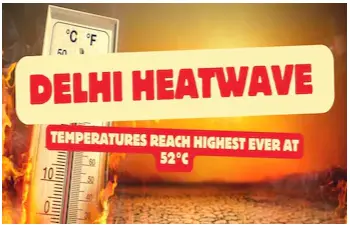
Temperature Anomaly in Delhi
- Anomaly Explanation
- Maximum temperatures across Delhi NCR ranged from 45.2 to 49.1 degrees Celsius in various parts of the city.
- The Indian Meteorological Department (IMD) operates 20 weather stations in Delhi, 15 of which are automatic weather stations (AWS), including Mungeshpur.
- AWSs record and transmit weather parameters automatically, without human intervention.
- Mungeshpur reported an outlier temperature of 52.9 degrees Celsius compared to other stations.
- IMD attributed this discrepancy to a possible sensor error or specific local factors.
- Factors Leading to High Temperatures in Delhi
- The deficit in rainfall contributed to heat accumulation.
- Clear skies and westerly winds from Rajasthan, where temperatures reached 50 degrees, added to the heat in Delhi-NCR.
- This time of the year witnesses intense heating across northwest India, including Delhi-NCR climatologically.
Expected Reduction in Heatwave Conditions
- IMD forecasts a reduction in heatwave conditions over the next 2-3 days due to:
- A gradual temperature decrease with an approaching western disturbance.
- Rainfall/thunderstorm activity.
- Southwesterly winds blowing from the Arabian Sea to northwest India.
Variation in Temperatures Within the Same City
- Local temperatures are influenced by both weather patterns and anthropogenic factors, especially in large urban centers like Delhi.
- Anthropogenic factors include the concentration of pavements, buildings, roads, and parking lots.
- Hard, dry surfaces provide less shade and moisture, resulting in higher temperatures.
- The material composition of infrastructure, such as concrete, affects temperature retention.
- Dense urban layouts and tall buildings obstruct natural wind flow, contributing to higher temperatures.
- Heavy use of air conditioners in commercial and residential areas further elevates local temperatures.
- Urban heat islands, areas with higher temperatures compared to surrounding regions, can form due to these factors.
Global Temperature Records
- Various regions worldwide have witnessed record-breaking temperatures in recent years:
- The United Kingdom surpassed 40 degrees Celsius for the first time in July 2022.
- A town in China's northwest recorded 52 degrees Celsius, the country's highest ever.
- Sicily, Italy, registered 48.8 degrees Celsius, the highest temperature recorded in Europe.
- Death Valley, California, holds the record for the highest temperature on Earth at 56.7 degrees Celsius, recorded in 1913.
- A study by Carbon Brief revealed that nearly 40% of the Earth experienced its highest-ever daily temperature between 2013 and 2023, including parts of Antarctica.
Global Warming Trends
- The year 2024 was projected to be exceptionally warm, following the trend of global warming.
- While India's warming trend is less pronounced compared to global averages, heatwaves in the country are more severe.
- Annual mean temperatures in India have risen by about 0.7 degrees Celsius compared to 1900 levels.
- Global temperatures, including oceans, have increased by at least 1.1 degrees Celsius compared to pre-industrial levels.
- Heatwave conditions in India are becoming more severe, with instances even in traditionally cooler months like February, as observed in 2023.
Source: IE
New System to Detect Scam/Fraud Calls
In News: The Department of Telecommunications (DoT) recently introduced a new tool to distinguish genuine calls from those made by fraudsters.

New System to Identify Scam/Fraud Calls: Dedicated Phone Number Series
The Department of Telecommunications (DoT) has introduced a new system to help identify scam and fraud calls through a dedicated 10-digit numbering series.
- Introduction of Dedicated Number Series
- The DoT has allocated a special 10-digit numbering series starting with 160 for service and transactional calls made by government agencies, regulators, and financial institutions.
- These numbers will provide additional information to help recognize the caller.
- Structure of the 10-Digit Number
- The series is designed to inform citizens about the calling entity, the telecom operator, and the origin of the call.
- For government and financial institutions, the 10-digit number will have a 160 prefix and follow the format 1600ABCXXX.
- The AB segment indicates the telecom circle code (e.g., 11 for Delhi and 22 for Mumbai).
- The C digit represents the telecom operator's code.
- The XXX digits range from 000 to 999.
- Financial Institution Numbers
- Numbers for financial entities regulated by the RBI, SEBI, PFRDA, and IRDA will use the 1601ABCXXX format.
- This format maintains the same structure, with specific digits indicating the telecom circle, operator, and a unique identifier.
- Verification and Transparency
- Telecom service providers (TSPs) are responsible for verifying each entity requesting a number from the 160 series.
- Entities must commit to using the number exclusively for legitimate service and transactional calls.
This new system aims to provide more information about incoming calls, helping citizens to identify potential scams and fraudulent activities more effectively.
Source: TN
K-9 Vajra
In News: After the elections, the Centre is currently reviewing several crucial 'Made in India' defense projects, including proposals for acquiring additional K-9 Vajra self-propelled howitzers and fighter aircraft engines, before granting final approval.

About K-9 Vajra
The K-9 Vajra is a 155 mm, 52-caliber tracked self-propelled artillery system designed for high-elevation shell firing to hit distant targets.
- Manufacturing and Design
- Built by Larsen & Toubro with technology transferred from South Korean defense major Hanwha Defense, based on the K9 Thunder platform.
- Capabilities
- Capable of performing a variety of missions by firing a wide range of artillery ammunition, including high explosive, smoke, and illumination shells.
- Equipped with all-welded steel armor up to 19 mm thick.
- The main weapon is a 155 mm / 52 caliber gun.
- Weighs 50 tonnes and can fire 47 kg bombs.
- Has a burst rate of fire of three rounds per 15 seconds.
- Maximum rate of fire is six to eight rounds per minute for three minutes.
- Can strike enemy targets at a distance of approximately 50 kilometers.
- Can turn around at zero radius, effectively rotating in place.
- Advanced Features
- Uses a digital fire control system, enabling it to fire multiple rounds that can impact a given area simultaneously.
Source: ET
CERT-In
In News: India’s Computer Emergency Response Team (CERT-In) recently issued a warning regarding a high-severity vulnerability found in Google Chrome for desktops.

About CERT-In: India's Cybersecurity Nodal Agency
CERT-In is the national nodal agency responsible for responding to computer security incidents as they occur.
- Affiliation and Objective
- CERT-In operates under the Ministry of Information & Electronics Technology, Government of India.
- Its primary objective is to secure Indian cyberspace.
- Establishment and Constituency
- CERT-In has been operational since January 2004.
- The agency's constituency encompasses the Indian cyber community and Indian cyberspace.
- Legal Designation and Functions
- The Information Technology (Amendment) Act 2008 designates CERT-In as the national agency for cybersecurity, tasked with the following functions:
- Collecting, analyzing, and disseminating information on cyber incidents.
- Issuing forecasts and alerts about cybersecurity incidents.
- Implementing emergency measures to handle cybersecurity incidents.
- Coordinating cyber incident response activities.
- Issuing guidelines, advisories, vulnerability notes, and white papers on information security practices, procedures, prevention, response, and reporting of cyber incidents.
- Performing other prescribed functions related to cybersecurity.
- Powers and Services
- CERT-In is empowered to call for information and issue directions to service providers, intermediaries, data centres, body corporates, and other relevant entities.
- The agency provides services to government, public, and private sector organizations, as well as to individuals and home users.
- Information Disclosure
- Disclosure of information by CERT-In will adhere to Indian constitutional laws.
Source: TH
The Eurasian Whimbrel
In News: For the first time, a long-distance migratory Eurasian (or common) whimbrel tagged with a Global Positioning System (GPS) transmitter has been captured on camera in the state of Chhattisgarh.

The Eurasian Whimbrel is a wading bird belonging to the large family Scolopacidae.
- Scientific Name
- Numenius phaeopus
- Distribution
- The Eurasian Whimbrel has an extensive range spanning five continents: North America, South America, Asia, Africa, and Europe.
- They breed in the subarctic regions of Siberia and Alaska during the summer.
- During the winter, they migrate south to the southern USA, Central America, South America, Africa, and South Asia, including Nepal.
- Habitat
- In winter, they primarily inhabit coastlines, coastal wetlands, mangroves, marshes, and larger rivers.
- Features
- The Eurasian Whimbrel is a fairly large greyish-brown bird with a long, decurved bill that has a kink.
- It has a distinctive head pattern with dark eye-stripes and crown-sides.
- Its upper parts are mottled dark brown, while the lower parts are pale with extensive brown streaking on the throat and breast.
- Generally solitary during nesting, the Whimbrel becomes gregarious outside the breeding season.
- Whimbrels are known for their high-pitched call, which consists of a repetitive series of seven notes.
- Conservation Status
- According to the IUCN Red List, the Eurasian Whimbrel is classified as Least Concern.
Source: IE
Insurance Regulatory and Development Authority of India
In News: Recently, the Insurance Regulatory and Development Authority of India (IRDAI) instructed general insurers to engage with transport authorities across 28 states and eight union territories to ensure the provision of mandatory covers for uninsured vehicles.
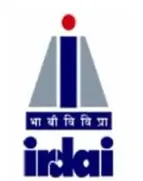
About IRDAI: India's Insurance Regulatory Authority
- Introduction
- The Insurance Regulatory and Development Authority of India (IRDAI) is a statutory body established under the Insurance Regulatory and Development Authority Act, 1999, for comprehensive oversight and advancement of the insurance sector in the country.
- Objectives
- To safeguard the interests and ensure fair treatment of policyholders.
- To regulate the insurance industry impartially and uphold its financial stability.
- To formulate regulations regularly to maintain clarity and transparency in the industry's operations.
- Headquarters
- IRDAI is headquartered in Hyderabad.
- Responsibilities
- It is responsible for registering and licensing insurance and reinsurance companies, as well as intermediaries, in accordance with regulations.
- IRDAI sets eligibility criteria, qualifications, and capital requirements for obtaining licenses in the insurance business.
- Entities Regulated
- Life Insurance Companies (both public and private sector)
- General Insurance Companies (both public and private sector, including standalone Health Insurance Companies)
- Reinsurance Companies
- Agency Channel
- Intermediaries such as Corporate Agents, Brokers, Third-party Administrators, Surveyors, and Loss Assessors.
- Composition
- IRDAI is composed of a 10-member body, including a chairman, five full-time members, and four part-time members appointed by the Government of India.
- Significant Responsibilities
- Ensuring efficient conduct of insurance business and protection of policyholders' interests.
- Approving product terms and conditions offered by insurers.
- Regulating investment of funds by insurance companies and maintaining solvency margins.
- Specifying financial reporting norms for insurance companies.
- Setting codes of conduct, qualifications, and training for intermediaries or insurance agents.
- Conducting inspections, inquiries, and audits of insurance entities.
- Ensuring insurance coverage in rural areas and for vulnerable sections of society.
Source: BT
Building Resilience Against Disasters in India
In News: A recent editorial talks about the aftermath of Cyclone Remal, highlighting the importance of constructing disaster-resilient infrastructure.
Disaster Management Framework in India: Strategies and Challenges
- Disaster Management Act of 2005
- The Disaster Management Act of 2005 established a legal and institutional framework for disaster management at national, state, and district levels in India.
- While states bear primary responsibility, the central government supports them logistically and financially.
- Institutional Framework
- National Disaster Management Authority (NDMA): Headed by the Prime Minister, formulates policies and guidelines for disaster management.
- National Executive Committee (NEC): Assists NDMA in preparing and monitoring national disaster management plans.
- State Disaster Management Authority (SDMA): Headed by the Chief Minister, responsible for state-level policies and plans.
- District Disaster Management Authority (DDMA): Led by the District Collector, implements district-level plans.
Key Institutions
- National Institute of Disaster Management (NIDM): Focuses on capacity development, training, and research.
- National Disaster Response Force (NDRF): Specialized force for disaster response.
Committees and International Commitments
- Cabinet Committee on Management of Natural Calamities (CCMNC): Oversees disaster management and public awareness.
- India is a signatory to the Sendai Framework for Disaster Risk Reduction and the Hyogo Framework for Action.
Current Major Disaster Threats
- Floods, cyclones, earthquakes, droughts, landslides, heatwaves, forest fires, and industrial accidents pose significant threats.
Exacerbating Factors
- Urbanization, climate change, aging infrastructure, environmental degradation, and industrial hazards worsen disaster risks.
Measures for Risk Reduction and Preparedness
- Establish dedicated disaster response corridors.
- Promote disaster-resilient infrastructure and agricultural practices.
- Implement ecosystem-based disaster risk reduction.
- Strengthen multi-hazard early warning systems.
- Develop micronet grids for critical infrastructure.
- Integrate mental health response teams.
- Enhance institutional capacity by hiring permanent workforce and allocating substantial disaster readiness reserves to local bodies.
|
UPSC Previous Year Questions Mains (2020) Q. Discuss the recent measures initiated in disaster management by the Government of India departing from the earlier reactive approach. Mains (2019) Q. Vulnerability is an essential element for defining disaster impacts and its threat to people. How and in what ways can vulnerability to disasters be characterized? Discuss different types of vulnerability with reference to disasters. Mains (2018) Q. Describe various measures taken in India for Disaster Risk Reduction (DRR) before and after signing ‘Sendai Framework for DRR (2015-30)’. How is this framework different from ‘Hyogo Framework for Action, 2005’? |
Source: IE
Share the article
Edukemy’s Current Affairs Quiz is published with multiple choice questions for UPSC exams
MCQ
Get Latest Updates on Offers, Event dates, and free Mentorship sessions.

Get in touch with our Expert Academic Counsellors 👋
FAQs
UPSC Daily Current Affairs focuses on learning current events on a daily basis. An aspirant needs to study regular and updated information about current events, news, and relevant topics that are important for UPSC aspirants. It covers national and international affairs, government policies, socio-economic issues, science and technology advancements, and more.
UPSC Daily Current Affairs provides aspirants with a concise and comprehensive overview of the latest happenings and developments across various fields. It helps aspirants stay updated with current affairs and provides them with valuable insights and analysis, which are essential for answering questions in the UPSC examinations. It enhances their knowledge, analytical skills, and ability to connect current affairs with the UPSC syllabus.
UPSC Daily Current Affairs covers a wide range of topics, including politics, economics, science and technology, environment, social issues, governance, international relations, and more. It offers news summaries, in-depth analyses, editorials, opinion pieces, and relevant study materials. It also provides practice questions and quizzes to help aspirants test their understanding of current affairs.
Edukemy's UPSC Daily Current Affairs can be accessed through:
- UPSC Daily Current Affairs can be accessed through Current Affairs tab at the top of the Main Page of Edukemy.
- Edukemy Mobile app: The Daily Current Affairs can also be access through Edukemy Mobile App.
- Social media: Follow Edukemy’s official social media accounts or pages that provide UPSC Daily Current Affairs updates, including Facebook, Twitter, or Telegram channels.

